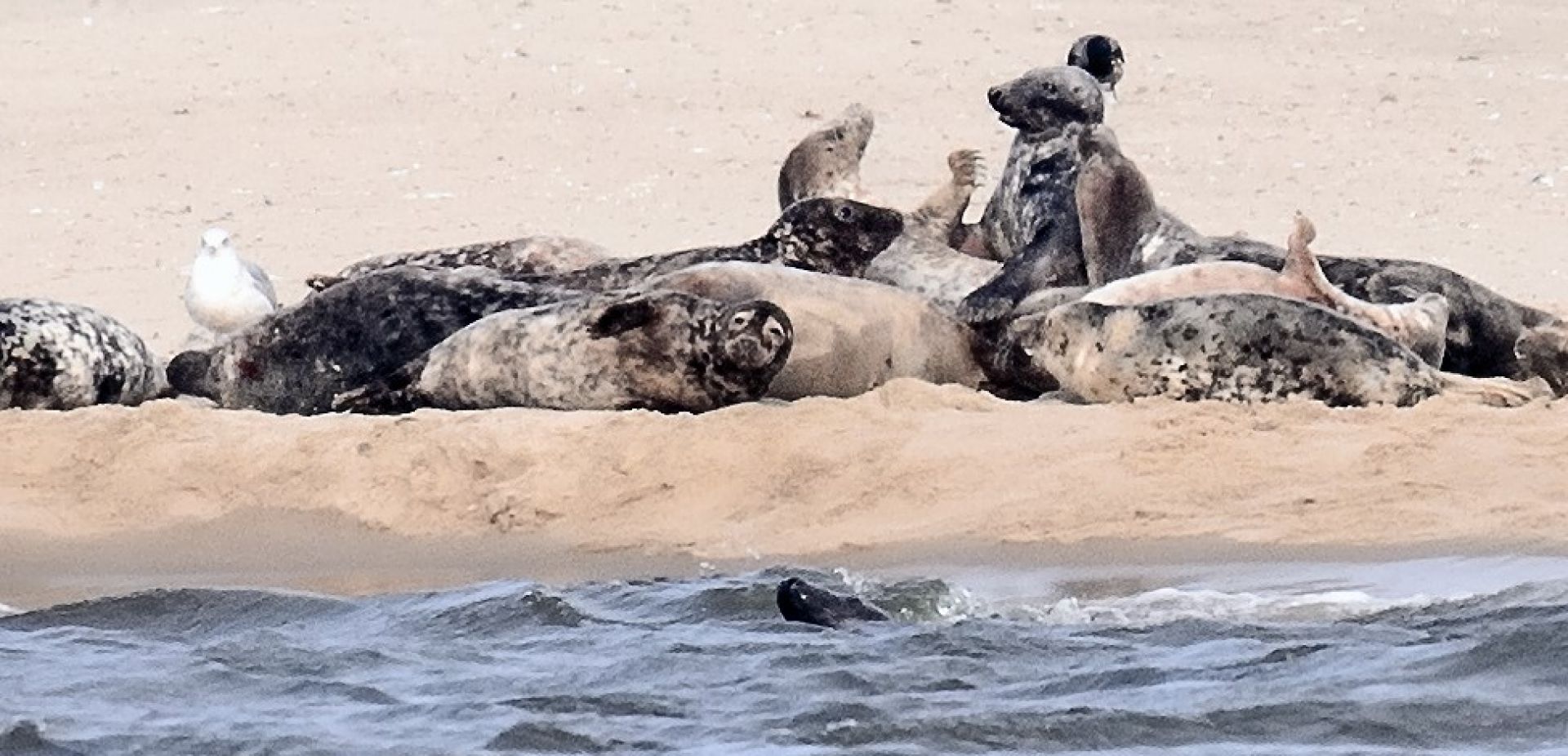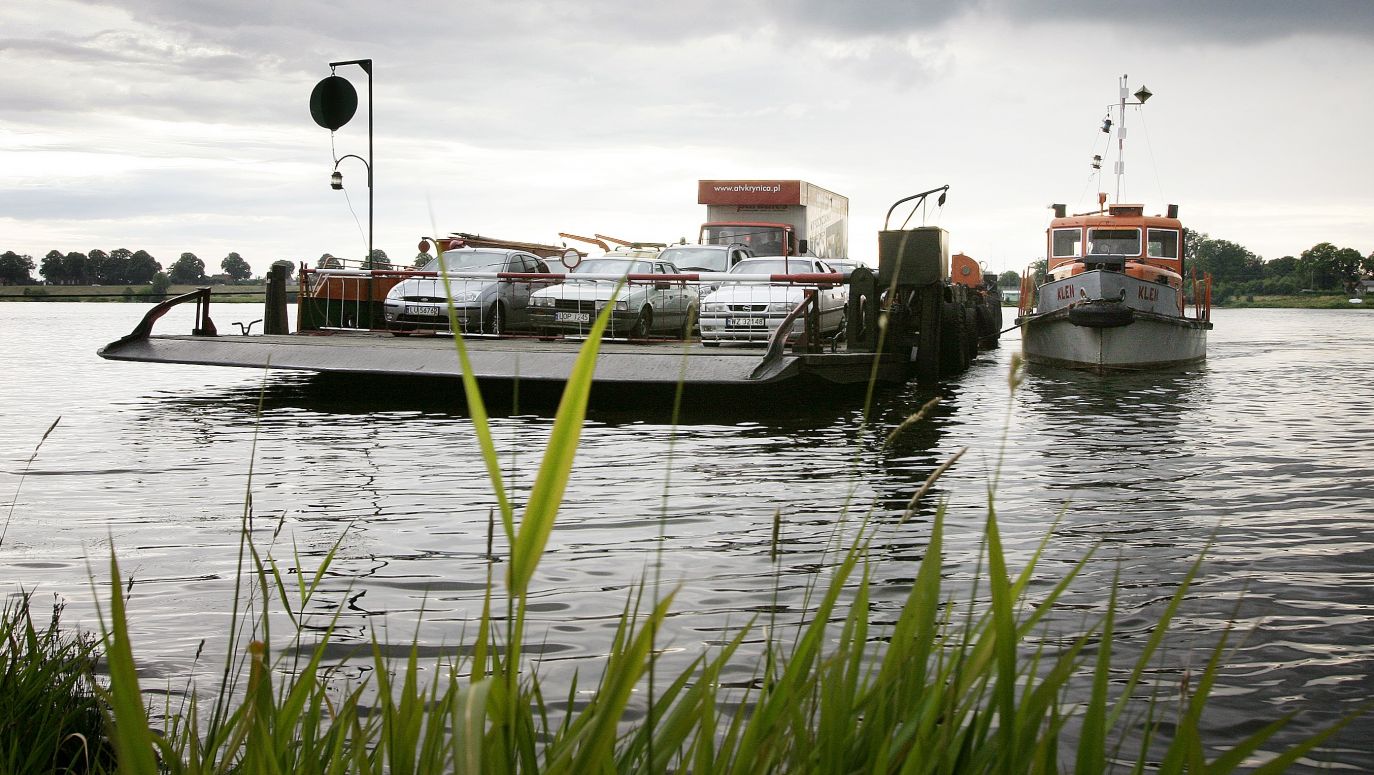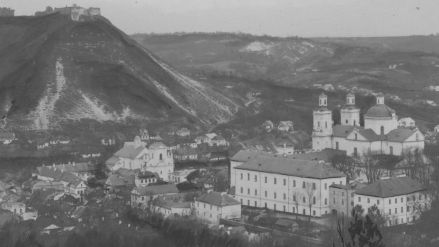I intended to see a photo. A few-day stay in Kąty Rybackie on the Vistula Spit encouraged us to pay a visit to Mikoszewo, a village situated on the Eastern bank of Vistula estuary. It is where cruises close by the Mewia Łacha [lit. Seagull Sidebank] on which, reportedly, seals love to lie. Such trips have already been nicknamed – foczing [from Polish “foka”, meaning seal]. But that day the last, afternoon cruise was cancelled off as the cutter broke down. We went on foot, along the right bank of the Vistula: it’s about two kilometers to Mewia Łacha. The river there is embanked. Perfectly fitted huge granite blocks filled with smaller and equally perfectly fitting “cobbled” pebbles.
Well, I thought to myself: somebody must have done a truly great work. But when was it? For although at school I was a diligent student and then I was given the opportunity to visit half of the world, I had never been to the Vistula Spit before nor had I heard of such undertaking upon the Vistula. Probably nor had been the majority of Poles. Meanwhile it was an unprecedented investment, which whole Europe looks at with admiration. The current dug-through between Kąty Rybackie and Krynica Morska is very important for many reasons, but compared to the “Vistula Dug-through” it is small investment.
Shame on me, I haven’t even realized before that our queen, the Vistula flows into the Baltic through an artificial estuary created between 1891 and 1895. Probably It’s due to the fact that back in the day this area belonged to German Russia while in the Polish People’s Republic, as it is commonly known the authorities reluctantly mentioned the Prussian achievements and heritage in the “Recovered Territories”. The same today, when I began to tell my acquaintance about my walks by the monumental “Vistula Dug-through”, everybody automatically thought about the current Vistula Spit Dug-through.
In the case of Wrocław, Posen, Stettin or Gdansk where almost every monument is virtually formerly German, the fact started to be recognized. In the case of Zulavia, Varmia and Mazuria i.e. former East Prussia the process of accustoming this “awkward heritage” is advancing more slowly, because in here, during the communist era it was erased more ferociously and the post-war DPs didn’t identify themselves with their new domiciles.
A good example for instance is Olsztynek where, before the city hall, sits a huge ion cut in stone. However it is extremely difficult to find somebody in the city who knows that this lion is the last remnant after a monumental mausoleum (Tannenberg-Denkmal) devoted to field marshal Hindenburg whose construction was ordained by Hitler. Nowadays the area after the mausoleum is grass and bushes, and the passing drivers travelling in the vicinity of Olsztynek on the S7 highway would probably be astounded if they were told that Adolf Hitler himself, together with Paul Hindenburg wanted to be buried on the hill seen from the S7 highway. Not in Berlin, but near Olsztynek. But that’s a different story – let’s go back to upon the Vistula.
A letter to king Stanislaus Augustus
Since the dawn of time the Vistula estuary to the Baltic was a great nuisance for the locals. The river, carrying, especially in spring, millions of tons of floe, sand, stones, logs and mud the river was constantly stuck and it would change its estuary flooding everything in the region. Over time, at the level Gdańska Głowa two branches of the final course – the so-called Gdansk Vistula (nowadays the Dead Vistula) and the Elbląg Vistula (now: Szkarpawa) were formed. But building dams, leveling up of floodbanks, and pile-driving was all in vain. The changeable river flooded Zulavia every spring.
 SIGN UP TO OUR PAGE
SIGN UP TO OUR PAGE

The first preserved plans, from the late 16th Century, show us works consisting in building dams at the Vistula’s estuary, most probably with the help of wooden chests filled with stones. Notes form the 17th Century speak of the construction of numerous dams made of piles as well as of artificial dredging with hand sack buckets. Which was also in vain. The first documented project of a radical solution i.e. of making a dug-through that would eventually direct the river towards the sea by a single estuary comes form 1768.

 SIGN UP TO OUR PAGE
SIGN UP TO OUR PAGE
 The first preserved plans, from the late 16th Century, show us works consisting in building dams at the Vistula’s estuary, most probably with the help of wooden chests filled with stones. Notes form the 17th Century speak of the construction of numerous dams made of piles as well as of artificial dredging with hand sack buckets. Which was also in vain. The first documented project of a radical solution i.e. of making a dug-through that would eventually direct the river towards the sea by a single estuary comes form 1768.
The first preserved plans, from the late 16th Century, show us works consisting in building dams at the Vistula’s estuary, most probably with the help of wooden chests filled with stones. Notes form the 17th Century speak of the construction of numerous dams made of piles as well as of artificial dredging with hand sack buckets. Which was also in vain. The first documented project of a radical solution i.e. of making a dug-through that would eventually direct the river towards the sea by a single estuary comes form 1768.






